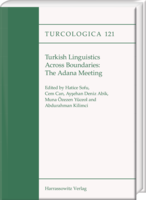|
weitere Titel zum Thema:
Bitte beachten Sie: Mit digitalen Produkten in Ihrem Warenkorb
wird die Bezahlung nur per PayPal möglich. Der Download dieser Produkte wird bereitgestellt, wenn die Bezahlung bestätigt ist. This volume is a collection of papers presented at 18th International Conference on Turkish Linguistics (ICTL) held every two years since 1982 both in Turkey and abroad interchangably. ICTL has been a valuable forum for the researchers studying Turkish and Turkic Languages to share their experiences with their colleagues both in their presentations and also through papers published in the proceedings of the conferences.
In this volume as well, 31 papers covering a wide range of subfields of Linguistic studies on Turkish and Turkic Languages were submitted for publication. Majority of the articles are on syntax of Modern Turkish investigating structures of various nominal constructions, along with issues related to sound system of Turkish such as the problem of soft G, phonological variation, and phonetic substitution in slips of the tongue. Among the articles on language development, two of the articles are on the development of narrative skills. Additionally, articles on other Turkic languages such as Circassion and Western Iranian Turkish and New Uyghur are also included in this volume. Articles on methodological issues as figurative language processing and phonetic notation system as applied to Turkish folk music are also included. Lastly, Turkish lexicon is represented with investigation of the relation between vocabulary and gender, and frequency of words in Turkish idioms. |
|||||||||||||||||||||||||||||||||||||||






